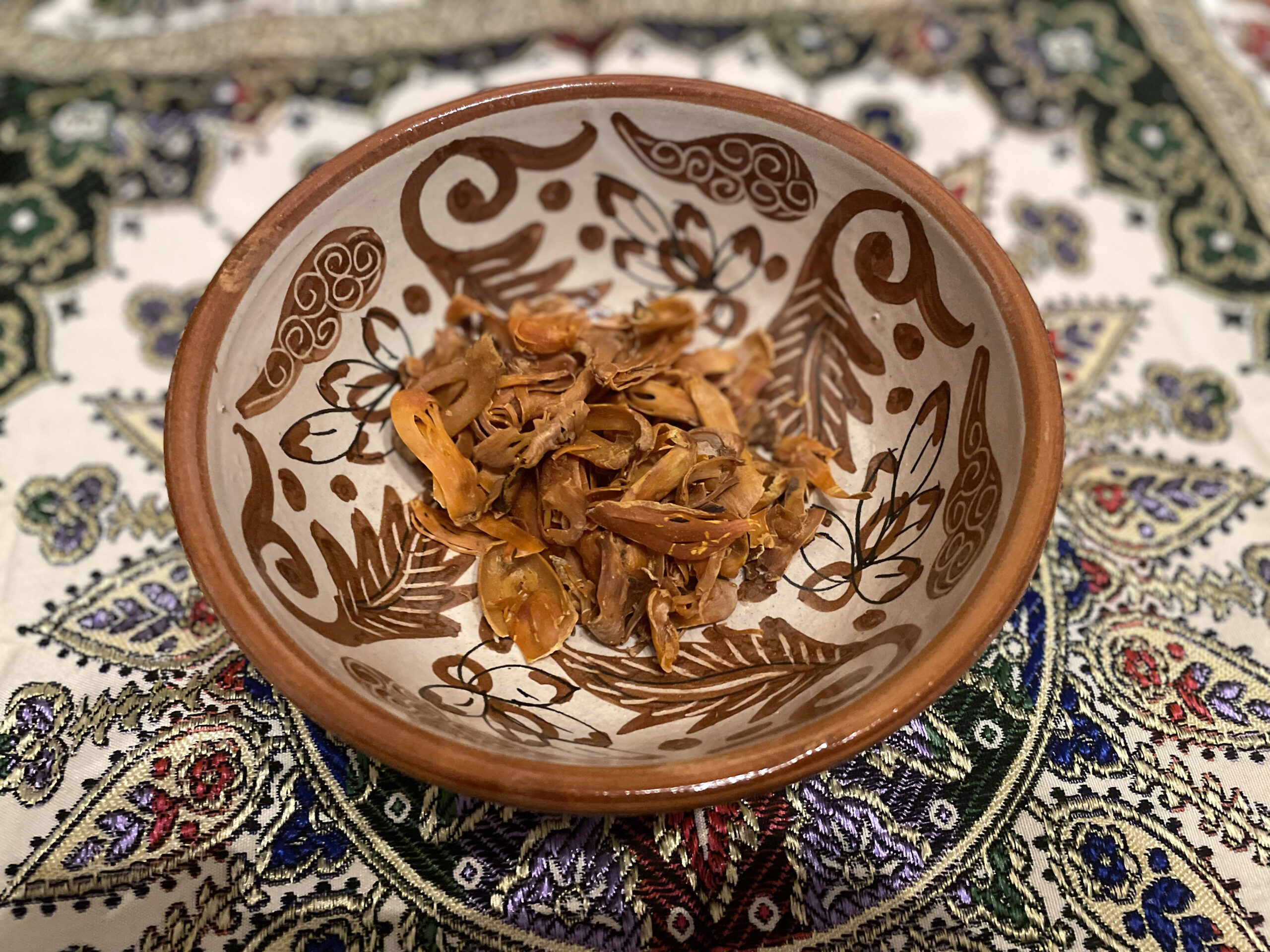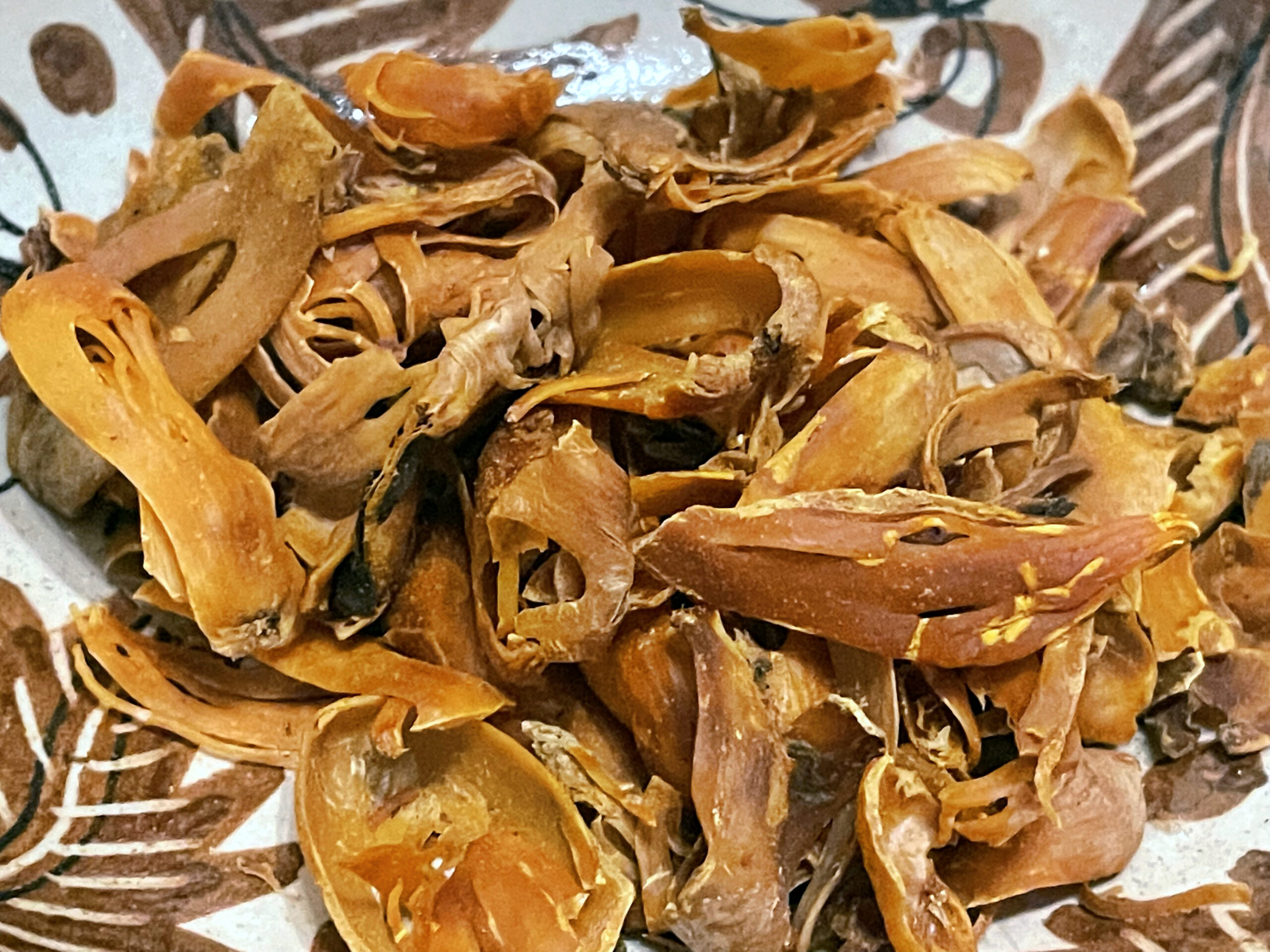This aromatic is the fruit of the Myristica fragrans tree, a tropical evergreen; to be more precise, it is the covering of the seed, which is nutmeg (jawz buwwā/جوز بوا, jawz al-tīb/جوز الطيب). Unknown to the ancient Greeks and Romans, both were introduced to the Mediterranean by Arab merchants. Together with cloves, they were some of the most expensive spices of the Middle Ages, due to the fact that they were only produced in a small Indonesian archipelago to the south of the Molucca Islands. In medieval Arab cuisine, mace was used quite sparingly, and appears primarily in drinks — often digestives or stomachics — and fruit conserves, as well as in perfumes. It is not mentioned in any of the recipes in Arabic cookery books from the Western Mediterranean (al-Andalus, North Africa). Today, it is sold in blades or ground.



